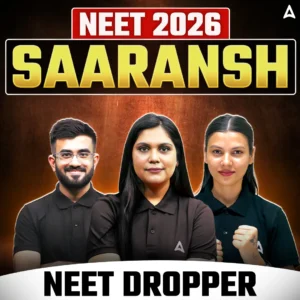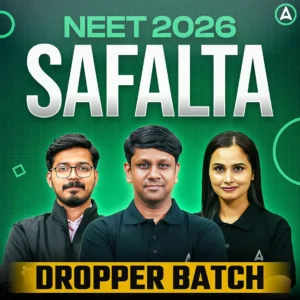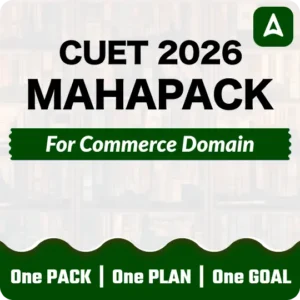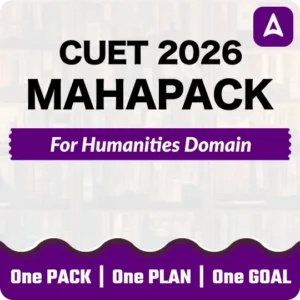IERT Full Form
The Institute of Engineering and Rural Technology was established in 1955 and it is located in Allahabad, Uttar Pradesh. Institute of Engineering and Rural Technology, Allahabad offers Degree and Diploma courses in various streams. To pursue diploma courses through the Institute of Engineering and Rural Technology students have to qualify for the entrance examination conducted by IERT. The final selection of students for admission in diploma courses will be based on a written examination followed by an interview. Whereas to get admission in B.Tech students have to appear in UPSEE (Uttar Pradesh State Entrance Examination) entrance examination conducted by Dr. A.P.J. Abdul Kalam Technical University. Students who are willing to pursue B.Tech in IERT must have 50% marks in their higher secondary examination. Applicants can apply online through the official website to get admission in various courses offered by IERT.
IERT Form
Candidates who meet the eligibility criteria for the relevant program must register online through the official website of the IERT and pay the registration fee. Applicants must fill out the requisite details accurately before submission of the online application.
Institute of Engineering and Rural Technology, Allahabad B.Tech Admission Process
- Fill out the application form for the Uttar Pradesh State Entrance Examination (UPSEE).
- To qualify, you must meet the cutoff.
- Participate in the Uttar Pradesh State Entrance Examination.
- The results of the Uttar Pradesh State Entrance Examination (UPSEE) will be used to make the final decision.
Institute of Engineering and Rural Technology, Allahabad Process for Diploma courses
- Fill out and submit the online application form for the Institute of Engineering and Rural Technology (IERT) in Allahabad.
- Make an appointment with the Institute of Engineering and Rural Technology (IERT).
- Participate in the counseling process at the Institute of Engineering and Rural Technology (IERT).
- They must fulfill the Institute of Engineering and Rural Technology (IERT) entrance processes and pay the fee if they are offered a place.
IERT Online Form Date
Allahabad’s Institute of Engineering and Rural Technology offers B.Tech, diploma, and postgraduate diploma programs. Dr. A.P.J. Abdul Kalam Technical University Uttar Pradesh, Lucknow, offers admission in IERT through the Uttar Pradesh State Entrance Examination. Interested candidates can enroll themselves in Diploma and Postgraduate diploma programs at Allahabad’s Institute of Engineering and Rural Technology. The Institute of Engineering and Rural Technology, Allahabad, conducts an entrance examination for admission to the diploma courses.
IERT Syllabus
MATHEMATICS
ARITHMETIC:
- Simple & Compound interest.
- Work-time and speed-time.
- Bank deposits and payments in installments, Taxation.
- Percentage, Profit, Loss & Discount.
- Ratio, Proportion & Mixture
STATISTICS:
- Importance of statistics and its usefulness.
- Classification of data frequency distribution, cumulative frequency. Graphical representation of statistical data, bar chart, histogram, frequency polygon, frequency curves, cumulative frequency curve and graphical representation, Pie diagram.
- Measures of Central Tendency- Mean, Median & Mode.
- Measures of Dispersion — Range, Mean Deviation, Standard Deviation & Variance.
ALGEBRA:
- Number System-Natural Numbers, Whole Numbers, Integers, Even Numbers, Odd Numbers, Rational Numbers, Irrational Numbers, Real Numbers, Prime Numbers, Twin Prime Numbers, Composite Numbers and their characteristics.
- Laws of Indices, Surds & Simplification.
- Square Roots & Cube Roots.
- Logarithms-definition, laws and their application, to find the characteristics & mantissa.
- Factors-expressions in the form of difference of two squares, trinomial expression, factorization by completing the square, expressions in the form of sum and difference of two cubes, reminder theorem, and expression of the type a^+b^+c^-3abc.
- L.C.M. & H.C.M by factorization.
- Linear & Quadratic Equations.
- Solution of simultaneous equations (linear equations with three variables) and problems based on them.
- Set Theory Sets, Representation of Sets, Types of Sets, Subsets, Universal set, Complement of Set, Union of Sets, Interaction of Sets, Disjoint Set, Difference of Sets, Laws of Algebra of Seu & Simple Problems with the help of Venn diagram.
- Mappings – Into Mapping, Onto Mapping, One-One Mapping and Many-One Mapping.
TRIGONOMETRY:
- Circular measures (relation between radian & degree), definition of trigonometric ratios and their relations.
- Trigonometrical ratios of angles
- Trigonometrical ratios of angles of 901-8, 18018, 270t8, 36018, where 8 is any angle.
- Trigonometrical ratios (sine, cosine, tangent and cotangent) for the sum & difference of two angles.
- Expressing products of sines and cosines into sum and difference form.
- Trigonometrical ratios of multiple & sub multiple angles.
- Angle of elevation and depression. Simple problems on height & distance.
GEOMETRY
- Pythagoras Theorem and its extension: Problems based on-
- The square on one side of a triangle is greater, equal or smaller than the sum of the squares on two sides of it, according as the angle between these two sides is an obtuse angle, a right angle or an acute angle. In case of an un-equality the difference is twice the rectangle contained by one of these sides and projection of the other on this side. Knowledge of the Pythagoras number (3, 4, 5), (5, 12, 13) etc.
- Apollonius Theorem- The sum of the squares contained on the two sides of a triangle equals twice the sum of the squares contained on half of the third side and the median bisecting this side.
- Circles: Problems based on-
- The line joining the center a circle to the midpoint of a chord is at right angles to it.
- The converse of the above theorem.
One and only one circle can pass through three points not on the same straight line.
- Segments subtending equal angles at the centers of equal circles are also equal.
- The converse of the above theorem.
- Equal chords of equal circles are contained on equal area. g The converse of the above theorem.
- In a circle equal chords are equidistant from the center. The converse of the above theorem.
- The angle subtended at the center of a circle by an area is as twice the angle subtended by it at the remaining circumference. Angles on the same segment of a circle are equal. If the angles subtended by a straight line formed by joining two points at two other points (in the same side) are equal, the four points are
- If the angles subtended by a straight line formed by joining two points at two other points (in the same side) are equal, the four points are noncyclic.
- Angle on the semicircle is a right angle, that on the major segment is acute and the one on the minor segment is obtuse.
- Area and Perimeter of Plane Figures.
MENSURATION (Solid Geometry): Surfaces & Volumes of Cube, Cuboids, Rectangular Parallelepiped, Right Prism, Right Pyramid, Right Circular Cylinder, Right Circular Cone and Sphere (application of the formulae without proof).
COORDINATES GEOMETRY: Distance Between Two Points, Section Formulae, Coordinates of Centroid, Circumcenter, Incentre & Orthocenter of a Triangle, Area of a Triangle & Quadrilateral, Collinear Points, Equations of Straight Lines in Different Forms, Length of a Perpendicular, Distance Between Two Parallel Lines, Equations of Parallel & Perpendicular Lines, Coordinates of the Foot of Perpendicular, Angles Between Two Lines, Co-ordinates of a Point of Intersection, Equations of the Bisectors of the Angles BeMeen Two Given Lines, Concurrent Lines.
IERT Syllabus: Physics
- Fundamental units: Fundamental quantities, S.I. system of fundamental units, standard meter, standard kilograms, standard second, micron, Angstrom & light years, derived units.
- Measurements of small length: Principal of vernier calipers & screw gauge and its applications, limit of accuracy of measurement, significant figures.
- Elementary Knowledge of Vectors: Distance & displacement, speed & velocity, representation of vector, addition of vectors (triangle & polygon method-only force diagram).
- Acceleration: Equation of motion under gravity (straight line).
MECHANICS:
- Law of Motion: “Newton’s law of motion, first law, second law of motion (force mass acceleration), unit of force (NeMon & Kilogram weight), the law of conservation of momentum, the third law of motion.
- Moment of Force: Moment of force and its unit, principal of moments, equilibrium of a body under the system of parallel forces, the center of gravity, condition of stable, unstable, and neutral equilibrium.
- WORK, POWER & ENERGY: Work, Power, Energy and its units (Joule, Watt), the definition of energy, kinetic energy, potential energy (examples of elastic, gravitational and electrical energy), Transformation of energy and its relation with work, conservation of mechanical energy, different forms of energy (including mass and energy relation).
- HYDRO-STATICS: Pressure in liquids & its dependence on density & depth, unit of pressure, laws of liquid pressure and deduction of Archimedes’s principal from it, Floatation upthrust of gases, principal of simple barometer, calculation of atmospheric pressure from the height of mercury column, practical application.
5. VIBRATION
- Periodic motion, time period, frequency, amplitude, characteristics of simple harmonic motion (No mathematical derivation).
- Wave Motion & Sound- Formation of wave and its mechanism of propagation, Transverse and Longitudinal waves, wavelength, speed of the wave, the relation between frequency of infrasonic & ultrasonic, general idea about electromagnetic waves (gamma rays, X-rays, ultrasonic rays, visible light, infrared radiation, sources of radio waves and it’s a simple example of application).
6. HEAT KINETIC THEORY OF MATTER
- Kinetic model of gases (no mathematical derivation). Explanation of the pressure of gases on the basis of kinetic theory, concept of temperature, relation between the pressure, volume and temperature of gases, ideal gas equation.
- Thermal Expansion – Coefficient of thermal expansion of solid, liquid and gases, practical application of thermal expansion, liquid thermometer. Temperature scales (Celsius, Fahrenheit, & Kelvin).
- Thermal Energy: Concept of internal energy, units of thermal energy(joule calorie). Thermal capacity and specific heat capacity. Latent heat, calorimeter (Principal of mixture, related problems).
- Thermal Radiation – Dependence of rate of radiation on area, temperature & nature of surface, cooling curve, emissivity and its need.
7. LIGHT:
- Some facts about light – Mutual independence of light rays, deviation from rectilinear propagation of light, scattering of light, diffused reflection.
- Reflection of light: Laws of reflection, ray diagram showing the formation of images from spherical mirrors (convex & concave), its size and nature, derivation of mirror formula and its use in numerical problems, linear magnification.
- Refraction of light on plane surface — Refraction & speed of light, Snell’s law, refractive index, refraction on two parallel plane surfaces refraction, deviation, dispersion of light and total reflection in prisms.
- Refraction through thin lenses: Converging & diverging nature of lenses; first & second principal focus. Ray diagrams showing the formation of images from lenses use of 1/U = 1/F and its use in numerical problems (No derivation), linear magnification power of lenses and its unit (Diopter).
- Optical Instruments: Formation of image in human eye power of accommodation, least distance of distinct vision, introduction of lenses as remedy of myopia (Short sightedness); hyper myopia (long sightedness), Photographic camera, slide projector, simple microscope and its magnifying power and arrangement of lenses in compound microscope and astronomical telescope.
8. ELECTROSTATICS:
- Atomic model of electrical phenomenon, negative, positive charge and their electron model, difference in conductor and nonconductor (free electron model), electrostatic induction and explanation of conduction in metal on the basis of free electron model
9. ELECTRICITY:
- Simple Circuits: concept of electric current and potential difference, ampere and volt, electric cell, electromotive force, Leclanche cell, Daniell cell and drycell (with chemical reactions), polarization lead accumulator (chemical reaction not required) measurement of current and potential difference, Ohm’s law, resistance & dependence of resistance on length of conductor, cross sectional area and nature of conductor specific resistance, combination of resistance in series and parallel, application of equivalent resistance in numerical problems internal resistance in numerical problems related with it. Series and parallel combination of cells.
IERT Syllabus: Chemistry
GENERAL & PHYSIML CHEMISTRY
- Science & scientific method, definition of chemistry, branches of chemistry and importance of chemistry in the modern age.
- Matter and its three physical states & deviation based on molecular kinetic theory.
- Atom, molecule and laws of chemical combination (Statement and examples).
- Atomic structure, nuclear proton, neutron, atomic mass unit, electrons and their orbits (Atomic no. & isotopes) Introduction of radio activity and nuclear energy.
- Valency- elctrovalency and co-valency.
- Symbol, formula, chemical equation, and balancing of simple chemical equations.
- Gas laws: Boyel’s laws, charle’s law, and gas equation; Gay-lussac’s law of gaseous volumes, Dalton’s law of partial pressure and Grahm’s law of diffusion.
- Avogadro’s Hypothesis and its importance.
- Atomic weight, molecular weight & equivalent weight. Examples and methods of their determinations (for molecular weight only Victor Meyer’s and Hoffman’s method).
- Faradays law of electrolysis, explanation of acid, base & salt, elementary concept of ionization. Principles of simple voltaiccell.
- Different chemical reactions-addition, substitution, dissociation, hydrolysis, double decomposition, oxidation-reduction, and catalytic.
- Explanation of solution- solution, solute, solvent saturated solution, unsaturated solution, and supersaturated solution, normal solution-molal solution, molar solution, solubility, viz; the reaction of the solution, some important solvents water, benzene, ether, acetone, carbon tetrachloride, and Alcohol
INORGANIC CHEMISTRY:
- Classification of elements, general characteristics of Mendeleev’s periodic table.
- Electronic configuration & position of the following elements in the periodic table, hydrogen, carbon, nitrogen, phosphorus, sulphur & chlorine.
- Drinking water, volumetric composition of water, hard & soft water, temporary & permanent hard water. Physical & chemical methods for removal of hardness of water.
- Laboratory method of preparation; properties and uses of the following gases; oxygen, nitrogen, chlorine, ammonia, sulphur dioxide, sulphurated hydrogen & hydrogen
- Difference between metals & nonmetals, metallurgyofAluminum.
ORGANIC CHEMISTRY:
- Introduction of organic chemistry. Definition and scope of organic chemistry, difference between organic & inorganic compounds. Preliminary introduction of tetrahedral nature of carbon atom.
- Classification & nomenclature of organic compounds-Aliphatic & Aromatic (Homologous Series).
- Methods of preparation and properties of Paraffins (Methane and Ethane) and unsaturated hydrocarbons (Ethylene and acetylene).
- Simple introduction of Plastic, artificial fiber, medicines, explosives, soap and detergents.
NUMERICAL PROBLEMS:
- Numerical problems based on the following topics: laws of chemical combination, percentage composition, empirical and molecular formula, chemical equation, equivalent weight, valency, the molecular weight of Volatile substances, Graham’s Law of diffusion, and Gas equation.
IERT Application Form Eligibility Criteria
Check out the table below to know the education qualification to get admission in the B.Tech at the Institute of Engineering and Rural Technology, Allahabad.
| Degree Name | Eligibility |
| B.Tech | Applicants need to pass 10+2 with Physics and Maths as a compulsory subject, and Chemistry/Biotechnology/Biology as optional. Students also need to score well in the Uttar Pradesh State Entrance Examination (UPSEE) conducted by Dr A.P.J. Abdul Kalam Technical University Uttar Pradesh, Lucknow. |
IERT Online Admission Form for Diploma courses
Allahabad’s Institute of Engineering and Rural Technology offers B.Tech, diploma, and postgraduate diploma programs. Dr. A.P.J. Abdul Kalam Technical University Uttar Pradesh, Lucknow, offers IERT admission to B.Tech. through the Uttar Pradesh State Entrance Examination. Interested candidates can enroll in Diploma and Postgraduate diploma programs at Allahabad’s Institute of Engineering and Rural Technology. The Institute of Engineering and Rural Technology, Allahabad, conducts an entrance examination for admission to the diploma courses.
| Degree Name | Eligibility |
| Diploma Courses | Students should pass 10+2 with Physics, Mathematics as compulsory subjects with Biology/Chemistry as optional, with minimum 50 percent marks. Students need to appear IERT entrance test. |
IERT Fees Structure
- The average cost of a B.Tech. program is Rs. 2.62 lakhs (approx)
- The average course fee for Diploma Courses is Rs. 53,000. (approx)
- The Post Graduate Diploma in Marketing Management has a total course fee of Rs. 35,000. (approx)
- The cost of the Post Graduate Diploma In Computer Applications is Rs. 26,000 in total.
IERT: B.Tech Courses
| Computer Science and Engineering | Civil Engineering |
| Electrical Engineering | Electronics Engineering |
| Instrumentation and Control Engineering | Mechanical Engineering |
| Industrial and Production Engineering |
IERT Allahabad Diploma Courses
| Automobile Engineering | Civil Engineering |
| Commercial Practice | Construction Technology |
| Electrical Engineering | Electronics Engineering |
| Instrumentation and Control Engineering | Materials Management |
| Plastics Technology | Power Plant Engineering |
| Production Engineering | Public Health Engineering |
| Tool Engineering | Tube Well Engineering |
| Refrigeration and Air Conditioning Engineering |
IERT Allahabad PGD and PGDCA course
| Post Graduate Diploma in Marketing Management | Post Graduate Diploma In Computer Applications |
IERT B.Tech Fee Structure
The fee structure for B.Tech is given below in the table. Have a look at the table below to know the fee structure of B.Tech at the Institute of Engineering and Rural Technology.
| Courses | Fees |
| Computer Science and Engineering | Rs. 2.62 Lakhs |
| Electrical Engineering | Rs. 2.62 Lakhs |
| Instrumentation and Control Engineering | Rs. 2.62 Lakhs |
| Industrial and Production Engineering | Rs. 2.62 Lakhs |
| Civil Engineering | Rs. 2.62 Lakhs |
| Electronics Engineering | Rs. 2.62 Lakhs |
| Mechanical Engineering | Rs. 2.62 Lakhs |
IERT Diploma Courses Fee Structure
The fee structure for Diploma courses offered by IERT is given below in the table:
| Courses | Fees |
| Automobile Engineering | Rs. 53,000 |
| Commercial Practice | Rs. 35,000 |
| Electrical Engineering | Rs. 53,000 |
| Instrumentation and Control Engineering | Rs. 53,000 |
| Plastics Technology | Rs. 53,000 |
| Production Engineering | Rs. 53,000 |
| Tool Engineering | Rs. 53,000 |
| Refrigeration and Air Conditioning Engineering | Rs. 53,000 |
| Civil Engineering | Rs. 53,000 |
| Construction Technology | Rs. 53,000 |
| Electronics Engineering | Rs. 53,000 |
| Materials Management | Rs. 35,000 |
| Power Plant Engineering | Rs. 53,000 |
| Public Health Engineering | Rs. 53,000 |
| Tube Well Engineering | Rs. 53,000 |
IERT PGD and PGDCA Fee Structure
The fee structure for PGD and PGDCA courses offered by IERT is given below in the table:
| Courses | Fees |
| Post Graduate Diploma in Marketing Management | Rs. 35,000 |
| Post Graduate Diploma In Computer Applications | Rs. 26,000 |





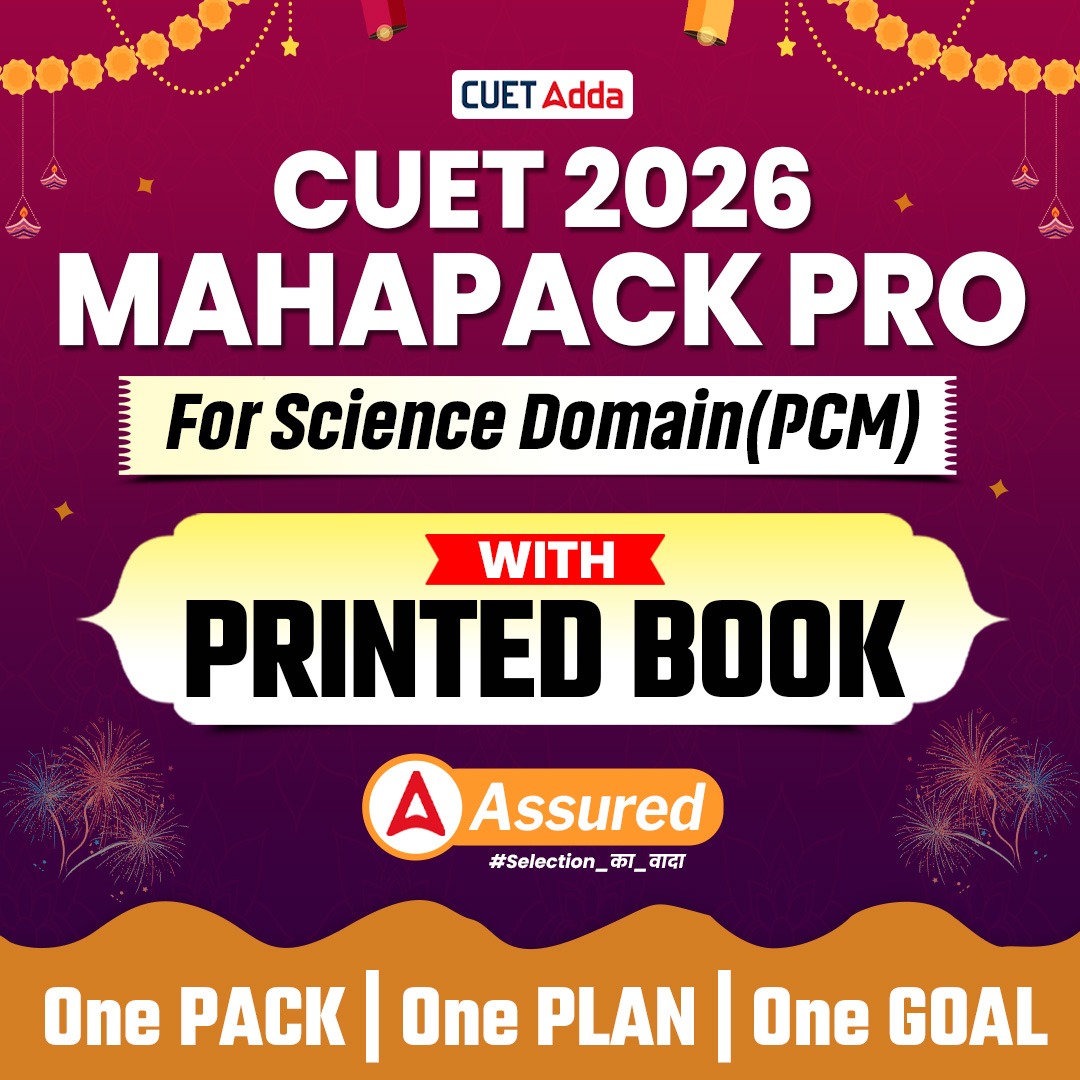



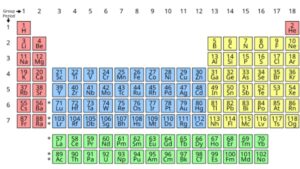 d -and f -Block Elements NEET Notes, Che...
d -and f -Block Elements NEET Notes, Che...
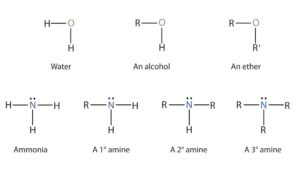 NEET 2026 Amines Chapter Notes: Key Topi...
NEET 2026 Amines Chapter Notes: Key Topi...
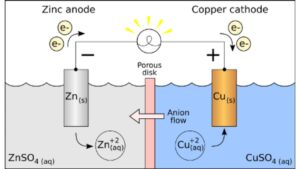 Electrochemistry NEET Notes, Check Impor...
Electrochemistry NEET Notes, Check Impor...

